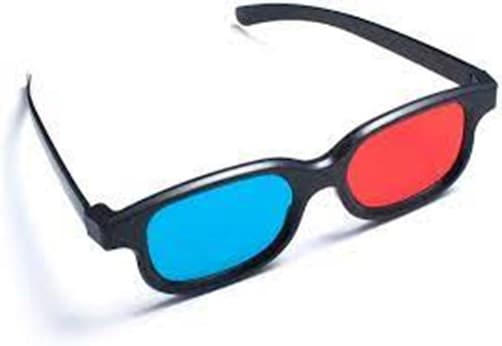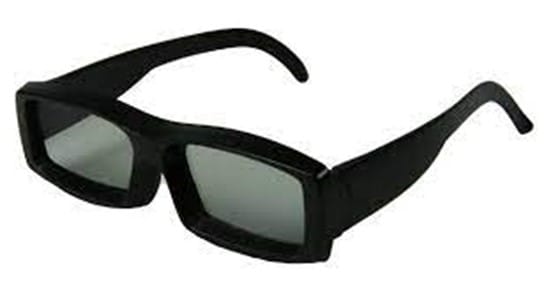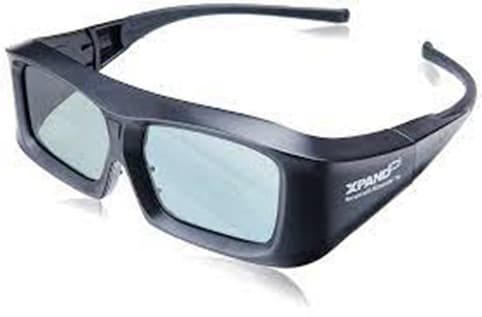3D movies have become a significant component of modern film, allowing viewers to witness superheroes in action up close. However, did you realize that this well-liked cinematic style isn't a recent creation? In reality, the first 3D film was released in 1922, almost a century ago. When the film industry was still at the beginning, how did 3D movies come to be?
Let's look at how 3D viewing, which includes 3D glasses, enables us to see our favorite characters up close. The Avatar movie by James Cameron was responsible for the highest increase in 3D popularity. For these purposes, 3D glasses were invented so that you can enjoy these action-packed movies to their fullest extent.
3D is widespread, and you may now access it from your house.
Many people question the following: What are 3D glasses, and how do they work? What are the common types of 3D glasses? Can you watch 3D movies without glasses?
What Are 3D Glasses, and How It Works?
3D glasses are a tool invented for users to view 3D images with ease and enjoy the 3D experience. To begin, it helps to know what you're looking at. A 3D image has two perspectives of the same image superimposed on each other.
By using 3D glasses, each eye filters chromatically opposite colors (typically red and cyan) to create a 3D eye-popping picture. You wear 3D glasses in a movie theatre to stream various images into your eyes, much like a View-Master does. When there are two images on the screen, the glasses make it such that one image enters one eye while the other enters the other.
Stereoscopy is a method your brain uses to give the appearance of depth when you see a 3D image using 3D glasses. Recall how a 3D image is created from two photographs taken from two different perspectives. Your brain combines these two additional images to create the illusion that the idea "pops out." 3D glasses only duplicate what your eyes already perform every day. It's almost like you're tricking your brain!
Wondershare Ani3D - Convert from 2D to 3D videos, from good to great.
- Lets you create 3D videos in 5 minutes.
- The processing time of a single video is 1:1 to the video length.
- Convert any video you like to 3D and watch it on your VR device.
- Simple and convenient operation, completed within 3 steps.
- Support batch operation.
The Common Types of 3D Glasses
You might have watched a 3D movie in a theatre or on your home television, but do you know how 3D glasses function? Several different 3D glasses can be used with projection to give you an incredible visual experience. There are three types of 3D glasses:
- Anaglyph 3D glasses
- Polarized 3D glasses
- Shutter 3D glasses
Working of all types of 3D glasses is given below;
Anaglyph 3D glasses:
These are the most common and widely used 3D glasses. These glasses are created in a manner where one lens is red, and the other is cyan. These lenses color-filter the layered image you're looking at to create the images you see. Your brain perceives an image as 3D because one lens completely removes all the red in a snap.
However, the other completely removes all of the cyan. Usually, the image you're viewing is the same image projected from two different angles or two completely different shots superimposed.

Polarized 3D glasses:
They block light from reaching your eyes, but their golden-brown color prevents red and blue colors from doing so. The image displayed on the screen also plays a part. The projected image is created by superimposing two images through an orthogonal polarizing filter on the same screen in addition to the polarization on the glasses. The glasses' identical type of filter enables each eye to see a separate image on the screen.

Shutter 3D glasses:
Shutter glasses are thought to be the most sophisticated 3D glasses currently on the market. Shutter glasses use active 3D instead of the passive 3D used by the other two forms of 3D glasses. They do not use filtered images or colors to produce a three-dimensional illusion.
Shutter glasses operate through LCD screen technology that alternately darkens the left and right lenses. Unless you're paying great attention, you won't notice the lens darkening because it happens so quickly. Shutter glasses are more expensive than conventional 3D glasses and are frequently battery- or even USB-powered. The price of these glasses significantly affects image quality.

How To Achieve 3D Video Effects Without 3D Glasses?
While sitting in the 3D cinema hall, we all have wondered if we can watch this at home on our simple tv screen. Not everyone is a fan of those 3D glasses because they are expensive to buy, and there is a slight possibility that you have them in your pocket. The actual 3D system is very expensive, and you set up your system at home.
Keeping a budget only to watch a movie at the cinema is very difficult for some people; thus, they constantly look for a way to see 3D movies without 3D glasses and systems. Fear not. We have found a way for our audience to view 3D movies without those glasses.
This article section will introduce you to software that allows you to see 3D images without wearing or keeping anaglyph 3D glasses. The software is called Wondershare Ani3D and was released by the well-known software developer company Wondershare.
The software does not currently have a mobile version; it is solely accessible through PCs. Both Windows and Mac can be used to access the application. Through an integrated feature, "Split Depth 3D", you can see 3D images with the naked eye.

Steps to use the Split Depth 3D feature are stated below:
Step 1. Launch the program.
Step 2. The UI of the application is straightforward to grasp once it has been opened. The application provides two ways to watch 3D videos, one of which is to see them generally with your eyes. The other lets you record 3D videos for virtual reality. Only the Split Depth 3D video option will be demonstrated here.

Step 3. A button at the bottom left for adding files to the player. Click on Add File to import files to Wondershare Ani3D.

Step 4. Choose the 3D files you want to view without the glasses and import them to the application.
Step 5. After importing the file in Ani3D, you can trim the video's length before conversion by the slider given.
Step 6. After that, click on the Preview Button to start the process.
Step 7. After clicking on preview, a window will pop up. Here you can change the save directory for the file, the file format in which it will be saved, the resolution of the video, and the frame rate. Then after the changes have been done, click on the export button.

Step 8. Your video has been processed and can be viewed with the naked eye.

FAQs
1. Can 3D glasses work on any TV?
No, it is a quick response. Not all TVs support 3D glasses. But they do function on many TVs. The distinction between active and passive 3D is crucial to remember. The majority of modern LCD and LED TVs support passive 3D technology. On most TVs, anaglyph and even polarized 3D glasses are compatible.
2. Are 3D glasses good for the eyes?
While 3D glasses won't directly harm your vision, they can strain your eyes and make you nauseous. This is how the brain sees and compiles images and peripheral vision.
3. Can 3D glasses be used as sunglasses?
Although the 3D glasses' lenses have UV protection, Polaroid Eyewear does not advise wearing them outdoors for an extended period because they have different qualities than sunglasses that offer complete UV protection.
Summary
This article has discussed 3D glasses and how they work. In addition, it also explains the types of 3D glasses and their working. The report was solely about 3D glasses, but in the end, we also introduced a way to watch 3D movies with the help of a desktop tool known as Ani3D by Wondershare, and you don't need any 3D glasses while using Ani3D. So what are you waiting for? Download and start using Ani3D.



